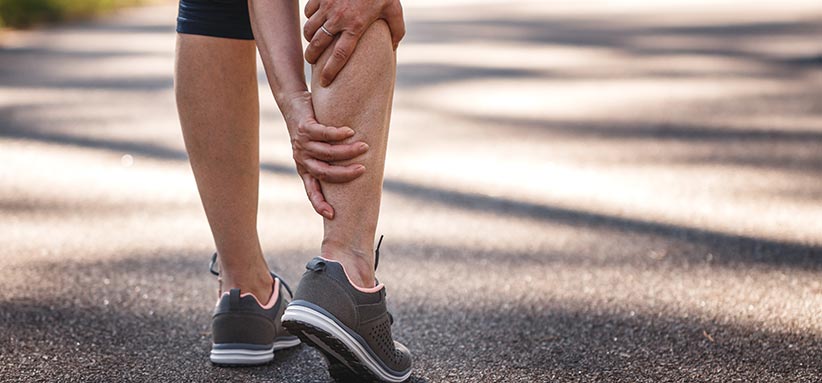Leg pain, such as sciatic nerve pain, interferes greatly with your everyday activities because your leg supports the rest of the body and plays a vital role in movement. Different health professionals can help you relieve these pains and get your leg back to normal.

Primary causes of leg pain
How does sciatic nerve pain manifest itself?
Pain caused by sciatic nerve irritation typically manifests as tingling, numbness, or even electric shock sensations in the affected leg, which follow the path of the sciatic nerve. It often accompanies pain in the lower back, but not always. This pain may increase with sitting, prolonged standing, and with hip movement. When it is more severe, the pain is sometimes a burning sensation.
Irritation or inflammation of the sciatic nerve, known as sciatica, can be caused by irritation of a nerve root to the spine (by a bulging or herniated disc, osteoarthritis, degenerative changes, etc). It can also be caused by a structure in the leg that prevents the nerve from moving properly, such as the piriformis (also called pyramidal) muscle located in the buttock. When this muscle compresses the sciatic nerve, we then refer to it as piriformis syndrome (or pyramidal syndrome).
The muscles behind the thigh and calves can also cause sciatic nerve irritation.
How do you know if you have shin splints?
Periostitis is the most common injury in beginner runners. It most often manifests as a sharp pain or burning sensation on the inside of the leg, very close to the junction between the tibia bone and the calf muscle. The painful area can extend for a few centimetres and is often very tender to the touch.
Periostitis is caused by too much muscle tension on the membrane that covers the bone (periosteum), which creates inflammation. In runners, it usually occurs due to errors in the running pattern, too rapid progression of training parameters, lack of mobility of the leg tissues or weakness of the stabilizing muscles.
How is leg pain treated?
Expert tip: Check your running gait
If your leg pain seems to be related to your running outings, as is the case for many runners, try to analyze your running gait.
A large impact force on the ground with each stride can cause this type of injury. To reduce your impact force, try to run “lighter” by making as little noise as possible and keeping your feet close to the ground. Count how many steps you take per minute. An ideal pace is around 180 steps per minute. To help you fit such a cadence into your running pattern, you can create a music playlist with similarly-paced songs.
Always pay attention to your symptoms so you know when to stop. It is normal to feel a little pain, but when it increases, it is a sign that you need to take a break.
Which professional should you consult?
Different professionals often work together to maximize results. If in doubt, we recommend that you first consult a physiotherapist so that they can assess your needs and the treatments required for the specific condition of your leg. If necessary, they will recommend other professional(s) to consult in order to optimize your rehabilitation.
Why consult a physiotherapist?
After a thorough assessment of your leg, a physiotherapist will explain which structures are affected and offer you a treatment plan based on your goals. Different options can be considered such as exercises specific to your condition, joint mobilizations, muscle relaxation techniques, etc. Your physiotherapist will also give you advice on how to relieve pain and get back to your activities.
Why consult an occupational therapist?
An occupational therapist will assess the impact of your leg condition on your usual abilities such as work, household chores and hobbies. Their treatments, which can take the form of strengthening exercises or simulating work tasks, for example, will help you maximize your autonomy at each stage of your recovery.
Why consult an osteopath?
Using various manual techniques, an osteopath will treat mobility restrictions that can affect all the structures of your body (bones, muscles, ligaments, viscera, etc.) related to your leg. Improved mobility allows the body to recover better and decreases pain.
Why consult a massage therapist?
A massage therapist will mainly work to release tension in the superficial and deep tissues that affect your leg to help you reduce pain and move more freely. Their treatments will also help increase blood circulation to promote better recovery.
Why consult an acupuncturist?
Through various techniques and using therapeutic tools such as needles and suction cups, an acupuncturist will work to reduce pain, stress, muscle tension and inflammation that can occur following a leg injury.
Why consult a kinesiologist?
A kinesiologist ill teach you how to do adapted exercises, based on their evaluation of your ability to move your leg as well as your physical condition, so that you can resume your activities.


